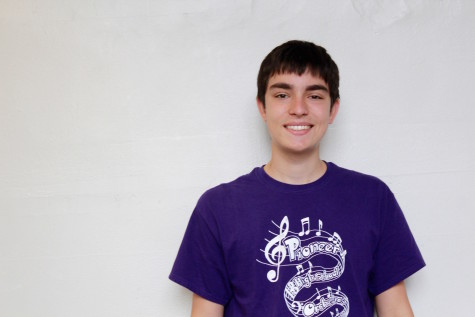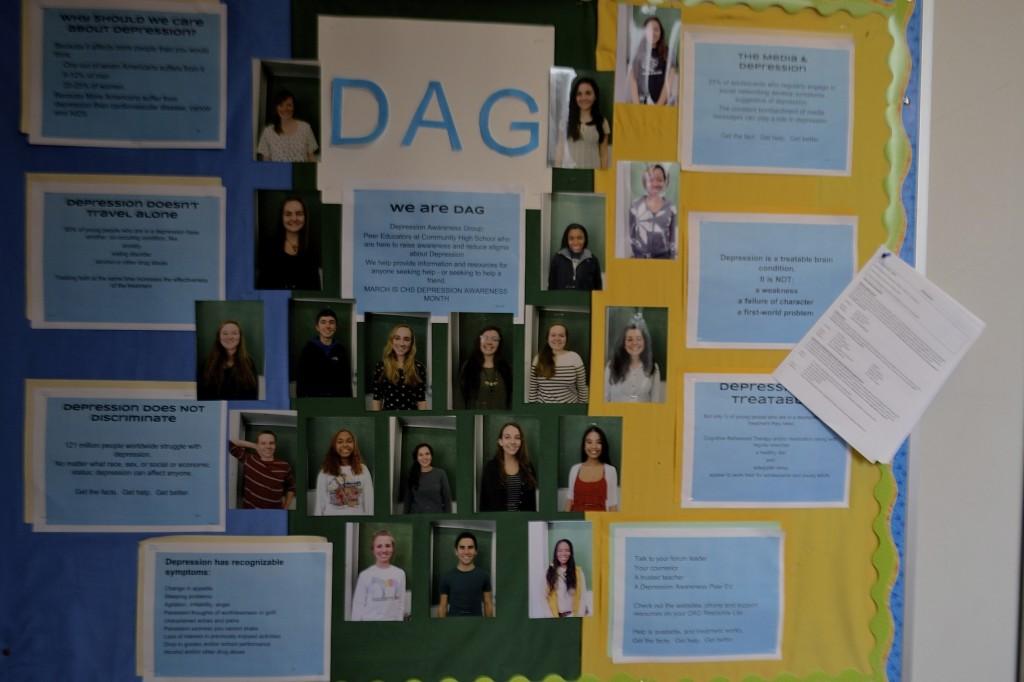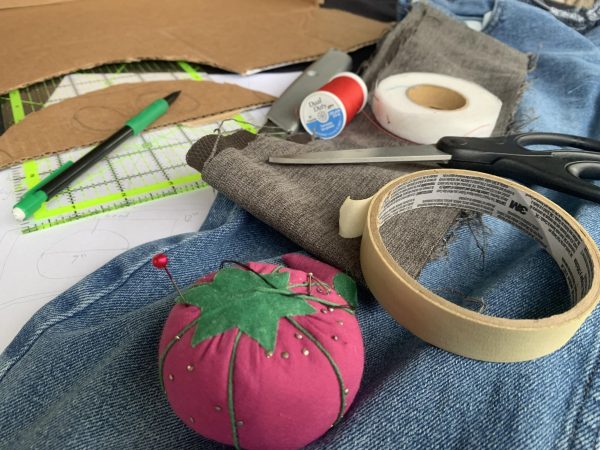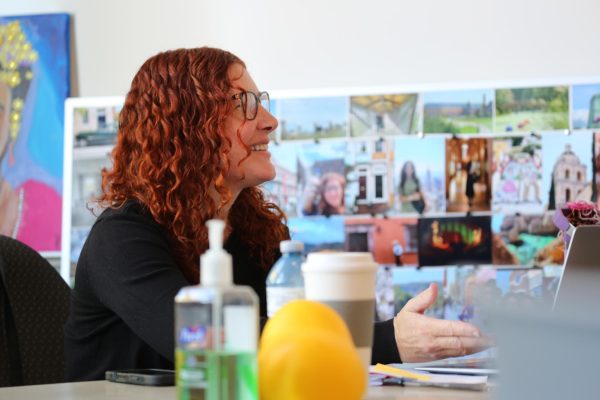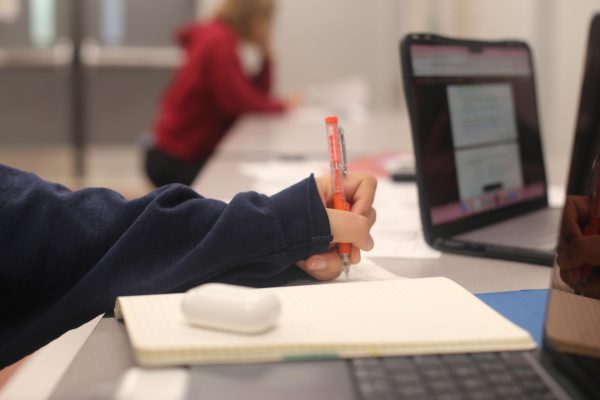Depression Does Not Discriminate
The faces of all the DAG Peer Educators are displayed across from the second floor ledge for anyone who needs them.
Depression is just as much of a mental illness as anything else. It controls the lives of its victims, causing potential retreat from social lives, and raises the likelihood of other dangerous problems, such as addiction. Yet many people mistake depression as the victim’s weakness — an assumption that could not be further from the truth. Throughout March, the 2014 Depression Awareness Month, Community High School’s Depression Awareness Group (DAG) is raising awareness about this misunderstood disease.
DAG’s objectives are to explain both the truth about depression, and how students can get help for themselves or their peers. Executing these explanations are CHS students who are members of DAG, known as peer educators. The peer educators go to classrooms and forums, where they speak about depression, and show a video called “I Had a Black Dog, His Name Was Depression” In addition, they provide resources for students seeking help in some way.
Since depression has many symptoms, it can come from many directions, and certain combinations of human behavior and emotions can be signs of depression. CHS senior Fernando Rojo describes depression’s symptoms and methods of diagnosis. Rojo is a DAG peer educator. “Depression is a mental illness that can be based on traumatic events that happen in someone’s life,” said Rojo. “It’s something that has a large list of symptoms, but is diagnosed generally when someone has five or more of the main symptoms for two weeks or longer. Those things include irritability, change in mood, change in appetite, change in sleep schedule, meaning too much or too little sleep, anything along those lines.”
As many as 20 percent of adolescents will experience depression before they reach adulthood, and 10 to 15 percent experience symptoms of depression at any given time. Additionally, suicide is among the highest causes of death for teenagers. These increased risks during teenage years means that high school is the critical time for students to learn about depression, and how to get help, before tragedy ensues. “Depression is something that debilitates someone’s everyday life, and doesn’t let them do what they would normally want to do,” said Rojo. “That’s why seeking help is something that maybe someone who weren’t depressed would be able to do, but because they are, they have much more trouble reaching out to do that, so that’s why we’re here, to give people that extra step.”
People who suffer from depression find it more difficult to ask for help, but those who are not victims can just as easily stand in their way. Depression is a disease surrounded by stereotypes, and the misconception that the victims are weak. In fact, depression has nothing to do with someone’s personality, and can affect anyone. One of DAG’s statements is that “depression does not discriminate.”
“What most people think about depression is that it is something that happens to people who are always negative, or that’s it’s just being sad, or that it’s people who gave up on themselves,” said Rojo, “when really it’s something that, for starters, is out of someone’s control until it’s treated. A lot of people think that depression is weakness, but it’s not. Some people think that depression is just being sad when things don’t really go well, but it’s not. It’s really something that involves problems in the brain chemistry. It’s something that can really affect someone’s life in a very negative way, just as any other illness could.”
Since depression is a disease, it needs treatment to be cured. However, both the victims and non-victims obstruct the path to recovery. This is where DAG comes in. By busting stereotypes about depression, providing resources for aid, and teaching students how to help a peer they fear has depression, DAG hopes to fulfill its mission statement: reduce stigma and spread awareness. “By talking about it more, and making people more in tuned with what it means, it kind of gets rid of the idea that depression is being weak, because it is no way being weak, and we’re really here to encourage people to get help, because that’s really important,” said Rojo.
“We have a lot of ideas for resources of if someone else is worried about a friend, or themselves, or anyone for that matter about being depressed. The first thing to do is talk to them, and voice concern, rather than just saying someone is available,” Rojo added. “Take them to Robbie, or to one of the Depression Awareness peer educators, or to John or Diane, and come with the intent of seeking help, because things like therapy … can really help.”
DAG emphasizes that their main goal is to help depression victims by raising awareness as much as by providing resources. “I think it’s important to know that the purpose of our efforts is to normalize the idea of treating depression,” Rojo summarized. “The idea of someone being depressed and seeking help should really be looked at as someone trying to make themselves more like themselves. Just like they would when they’re battling any other illness.”
